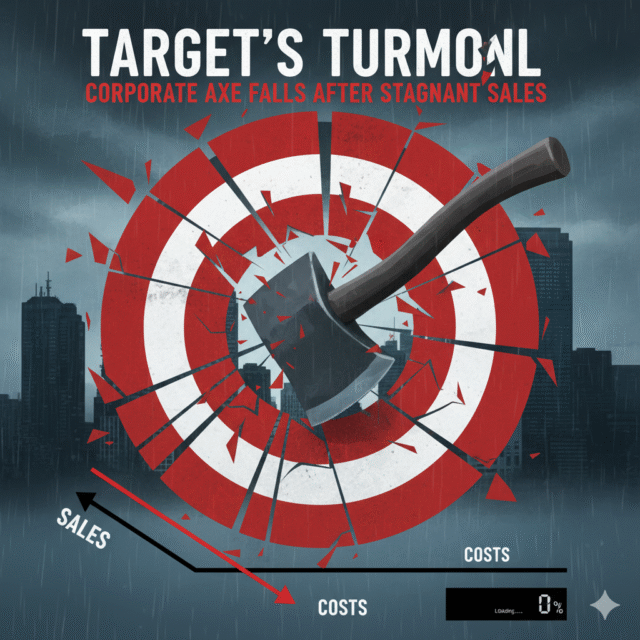The Axe Falls: A Sign of Deeper Troubles
After a series of disappointing quarters marked by stagnant sales and dwindling consumer confidence, the news that Target is planning to slash its corporate workforce shouldn’t surprise anyone who’s been watching the retail giant closely. As a business columnist with over a decade in this game, let me tell you—this isn’t just a routine restructuring. It’s a clear, and rather desperate, move to shore up the balance sheet and signal to investors that management is serious about correcting course.
For years, Target thrived by walking a delicate line: offering stylish, curated products at competitive prices. But the post-pandemic landscape, coupled with stubborn inflation and a shift in consumer spending habits (less on home goods, more on experiences), has exposed a core vulnerability. When sales dry up, overhead costs—especially a large, expensive corporate apparatus—become an unsustainable drag.
The Cost of Complexity
The decision to cut corporate jobs is a brutal one, but it speaks volumes about where Target might have grown too complacent. Large corporations, particularly those undergoing massive digital transformations and supply chain overhauls, tend to suffer from “corporate bloat.” Layers of management, redundant roles, and projects that consume capital without generating proportionate revenue all contribute to a costly, slow-moving machine.
This workforce reduction isn’t about improving the in-store experience; it’s about surgical cuts to SG&A expenses to boost that all-important operating margin. The risk, of course, is that they might be eliminating the very talent—the planners, the strategists, the innovators—needed to solve the core problem of stagnant sales.
Investor Reaction and the Road Ahead
From an investment standpoint, initial reaction is often positive. Wall Street loves to see decisive action. Layoffs are viewed as an immediate, tangible way to realize cost savings and improve profitability metrics in the short term. It’s a classic “pump-the-stock-price” play.
However, investors need to look beyond the immediate bump. The fundamental question remains: Why aren’t people buying?
- Macroeconomic Headwinds: Consumers are under pressure. Discretionary spending is down. Target’s mid-to-high-end general merchandise is often the first thing people cut.
- Competitive Pressure: The race to the bottom on price with Walmart and the dominance of Amazon’s delivery model continue to squeeze traditional retailers.
- Inventory Mismanagement: Target has struggled with getting the right inventory in front of the right customers, leading to deep discounting that erodes margins.
Target’s leadership now has the unenviable task of proving that these cuts aren’t a sign of panic, but a prelude to a strategic pivot. They must leverage the cost savings to aggressively reinvest in areas that will drive sales: faster fulfillment, sharper pricing in essential categories, and a truly compelling product selection that convinces shoppers to choose them over the competition.
Until we see a clear, executable plan for sales growth—not just cost reduction—Target remains a high-risk, high-reward investment. The corporate axe may stop the bleeding for a quarter or two, but it certainly won’t cure the illness.




















